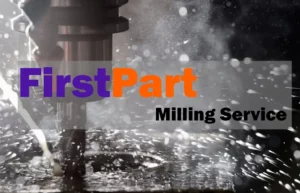Die casting is a metal manufacturing technique used in the production of large volumes of a part under high quality processing conditions. The benefits of die casting are well known to revolve around its cost-effectiveness, ability to achieve complex parts and deliver parts with higher and tighter heat and dimensional tolerances respectively.
As is the case with other forms of metal manufacturing, the end of the die casting process does not mean the end of the part processing. More often than not, die casted parts may require surface treatment to convey certain physical properties. These properties may range from appearance to cosmetic and performance improvements. In other instances, some surface treatments may remove production defects, prevent subsequent defects, prolong lifespan and improve electrical conductivity. Now that the “die” is “cast”, literally, what next for your part? Here is a list of the most surface treatments to consider for your part:
1. Anodizing
Anodizing is a protective coating applied to a metal part to create corrosion resistance, abrasion resistance or surface hardness. There are type I, II and III anodizing options. Anodizing is a finish that comes in a variety of colours. This makes it a feasible option for delivery both colour and protection on a finished metal die casted part.
2. E-coat
E-coat is more of a decorative technique that uses electricity to deposit the layers of paint on the die casted part. It also conveys some level of corrosion resistance on the part and is more affordable than other painting solutions.
3. Gold plating
Gold plating is a metal treatment solution that delivers true value for money. It is used to convey anti-oxidative properties on the part. Gold plating is particularly popular in instances where wire bonding, integrated circuits, contact resistance and electronic connections are involved. Although more expensive, the application is very reliable.
4. Casting impregnation
Due to the nature of the die casting process, impurities, dirt and even the natural process flow may result in the formation of some pores in the part. Depending on the severity, the presence of these pores may affect the structural integrity of your part. If it is critical that your part remains 100 percent solid and pressure-proof, vacuum impregnation fills the tiny pore holes that were formed in the production of the part, making it completely pressure tight. This surface treatment is also excellent for creating watertight components, reducing scrap and increase process yields.
5. Chrome plating
Chrome plating is one of the more expensive options for die casting surface treatment. This is because of the amount of time and effort involved in the process. Chrome-plated parts have a mirror-like finish and is great for exterior parts where visual aesthetics is important.
6. Teflon
Teflon involves the use of a thermally-cured film, TEFLON, which helps to deliver corrosion resistance to the part.
7. Electroless nickel
This is a nickel coating process that is done without the usual electrolysis. In this treatment, the die casted part is submerged in the bath containing nickel. The plating could be low, mid or high-phos depending on the volume of phosphate in the mixture. The phosphate-nickel ratio determines the ductility, brittleness, wear and tear properties of the die casted part.
8. Aluminium passivation
Aluminium passivation is a treatment for die casted parts made from aluminium. The process is used to add a thin layer/film to the part to prevent part corrosion. Also referred to as conversion coating, the thin layer added by the passivation process does not lower the electrical and thermal conductivity of the casted part.
9. Powder coating / Painting
Powder coating is one of the more popular die casting finishes. It involves the curing of the part at very high temperatures to leave a tougher part that is scratch and abrasion resistant. The coat may be delivered in varying colours, texture or gloss.
Asides these popular options, additional surface treatments for die casted parts include:
· Chemical washing
· Nickel plating
· Silver coating
· Black oxide
· Chem films
· Cobalt tin and
· Copper-nickel-tin applications
Although surface treatments may increase your spend on each die casted part, the benefit and preventative measures they convey is almost always worth it.
It is noteworthy that die casted parts made from high-quality materials will by default, not need coating. Any coating applied to these parts may be strictly aesthetic. Coating your part, may however, deliver more attractiveness, increased value, longevity and functionality. This is why you must work with an expert die casting outlet to determine what your part needs, what finishing, and surface treatment is ideal using a cost-benefit approach.
Which Die Casting Finishing is right for me?
While there are options to choose from when finishing in die casted prototypes and parts, Firstpart can help you optimize your production and choose what is best for you. The ideal finish depends on a number of factors including but not limited to budget, material, function, leadtimes and application, colour and aesthetics. Please click here to get in touch with one of our experts and determine the best process for you.
Firstpart will also provide you with free quotes, design and finish suggestions on your next project right away! Work with us and allow us to manage your die casting production needs and help you transition from rock solid prototypes to excellently finished die-casted products.










